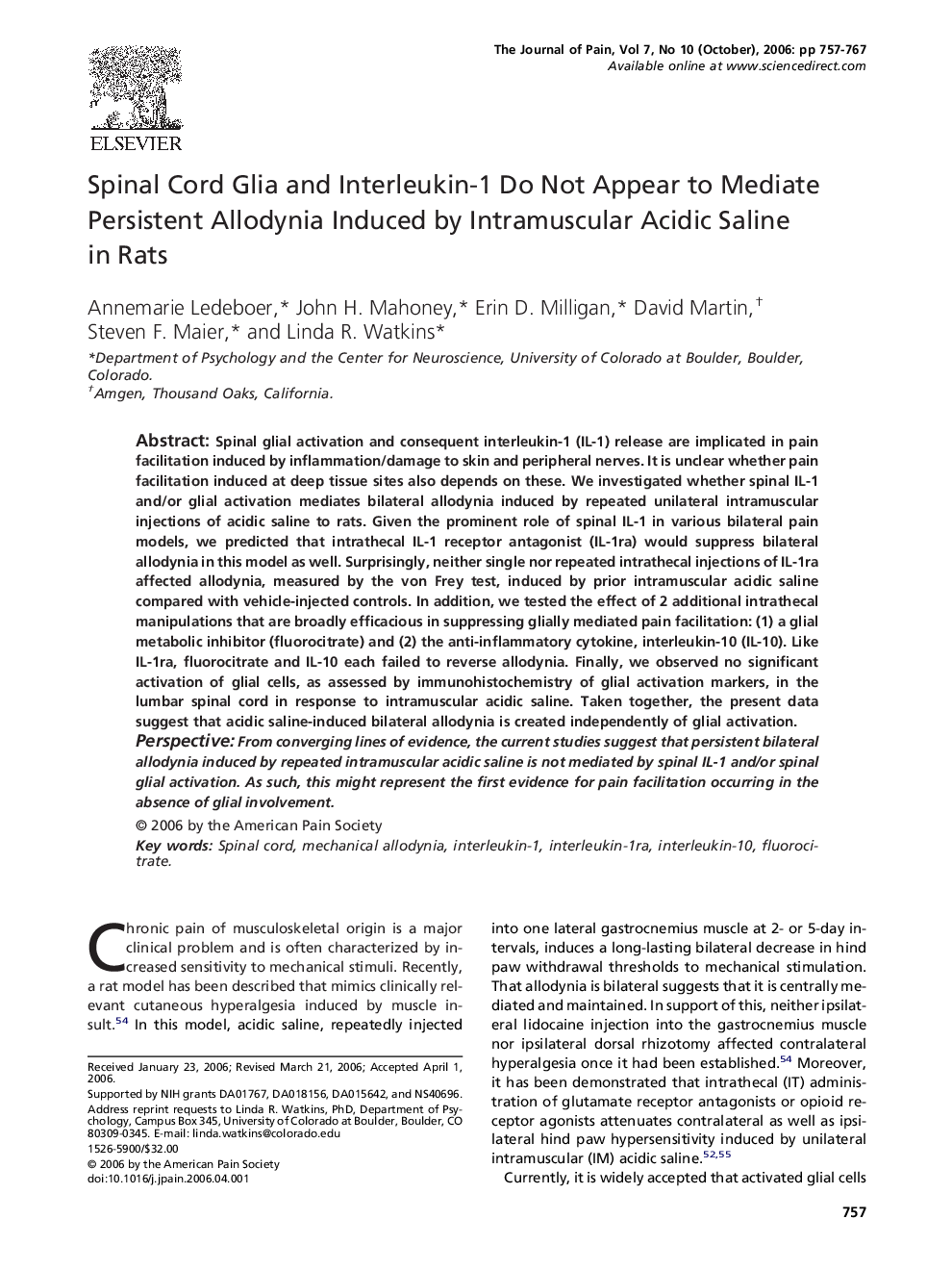| Article ID | Journal | Published Year | Pages | File Type |
|---|---|---|---|---|
| 2733049 | The Journal of Pain | 2006 | 11 Pages |
Spinal glial activation and consequent interleukin-1 (IL-1) release are implicated in pain facilitation induced by inflammation/damage to skin and peripheral nerves. It is unclear whether pain facilitation induced at deep tissue sites also depends on these. We investigated whether spinal IL-1 and/or glial activation mediates bilateral allodynia induced by repeated unilateral intramuscular injections of acidic saline to rats. Given the prominent role of spinal IL-1 in various bilateral pain models, we predicted that intrathecal IL-1 receptor antagonist (IL-1ra) would suppress bilateral allodynia in this model as well. Surprisingly, neither single nor repeated intrathecal injections of IL-1ra affected allodynia, measured by the von Frey test, induced by prior intramuscular acidic saline compared with vehicle-injected controls. In addition, we tested the effect of 2 additional intrathecal manipulations that are broadly efficacious in suppressing glially mediated pain facilitation: (1) a glial metabolic inhibitor (fluorocitrate) and (2) the anti-inflammatory cytokine, interleukin-10 (IL-10). Like IL-1ra, fluorocitrate and IL-10 each failed to reverse allodynia. Finally, we observed no significant activation of glial cells, as assessed by immunohistochemistry of glial activation markers, in the lumbar spinal cord in response to intramuscular acidic saline. Taken together, the present data suggest that acidic saline-induced bilateral allodynia is created independently of glial activation.PerspectiveFrom converging lines of evidence, the current studies suggest that persistent bilateral allodynia induced by repeated intramuscular acidic saline is not mediated by spinal IL-1 and/or spinal glial activation. As such, this might represent the first evidence for pain facilitation occurring in the absence of glial involvement.
